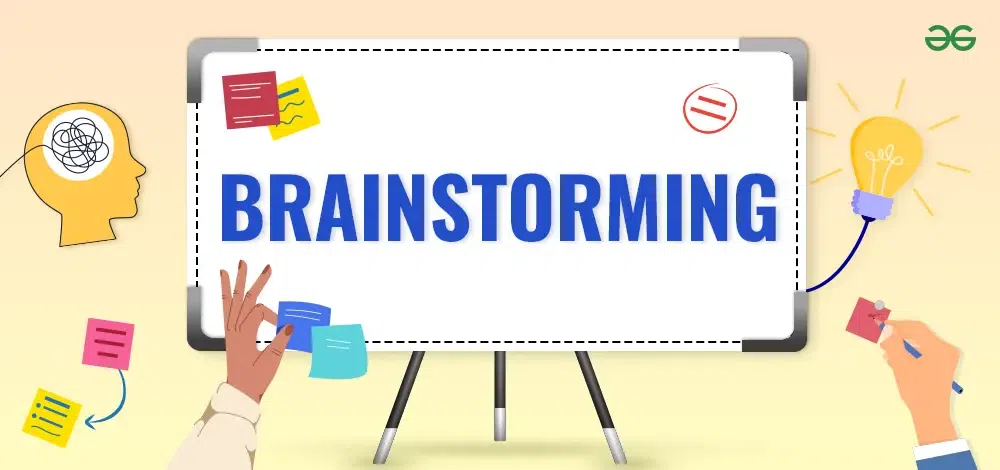We’ve all been there. You have a big project, a new business idea, or a complex problem to solve. Your head is full of thoughts, ideas, questions, and half-formed plans. It feels like a tangled ball of yarn—you know there’s a clear thread in there somewhere, but you just can’t find the end to start pulling.
This overwhelming feeling is where many great ideas stall. Traditional note-taking with linear lists often isn’t enough to capture the dynamic, interconnected nature of our thoughts. We need a better way to see the big picture and all its moving parts at once.
This is where structured brainstorming techniques come in. They are designed to move ideas from the chaos of your mind onto a structured visual space, making the complex simple and the overwhelming manageable. This article will guide you through several powerful, yet simple, techniques to brainstorm and organize even the most complicated projects.
Why Your Brain Needs a Visual Help
Our brains are not naturally structured like a bullet-point list. They think in networks, associations, and images. One thought leads to another, which connects to a memory, which sparks a new idea. This is a beautiful, non-linear process, but it’s hard to capture on a standard document.
Visual brainstorming techniques work because they mirror the way our brains actually operate. Instead of fighting your natural thought process, you’re enhancing it. By mapping ideas visually, you achieve several key things:
- See Connections: You can literally see how one small idea links to a larger goal.
- Identify Gaps: Empty spaces on your map show you where your thinking or planning is incomplete.
- Boost Memory: Visual maps are easier to remember than pages of text.
- Encourage Creativity: The free-flowing nature helps you make creative leaps you might miss otherwise.
- Improve Collaboration: It gives everyone on a team a shared, clear picture of the project.

Technique 1: Mind Mapping – The Classic Powerhouse
The mind map is the most well-known visual brainstorming tool, and for good reason. It’s incredibly versatile and intuitive.
What it is: A mind map is a diagram that starts with a single central idea. From that center, you draw branches outward to represent related subtopics or main themes. Each of those branches can then have their own smaller branches for more detailed ideas, creating a radiant, organic structure that grows from the inside out.
When to Use It:
- Note-taking during a meeting or lecture.
- Summarizing a book or article.
- Planning a blog post, essay, or speech.
- Brainstorming ideas for a new product or service.
- Solving a personal problem by exploring different aspects.
How to Do It (Simple Steps):
- Start in the Center: Write down the core topic or problem in the middle of a blank page (or digital canvas) and circle it.
- Add Major Branches: Identify the key main categories or themes related to your central topic. Draw a line out from the center for each one and label it. These are your “first-level” branches.
- Expand with Sub-Branches: For each main branch, ask yourself: “What are the components or ideas related to this?” Draw smaller lines out from the main branches and add these child ideas.
- Keep Going: Continue to expand outward, adding more layers of detail as needed. Use keywords and short phrases, not long sentences.
- Make it Visual: Use different colors, symbols, and small drawings to code and emphasize different types of information. This makes the map more memorable and engaging.
The beauty of a mind map is its flexibility. There are no strict rules—only what works for your brain.
Technique 2: The Concept Map – For Understanding Relationships
While a mind map radiates from a single center, a concept map is often more free-form and focuses on the relationships between multiple ideas.
What it is: A concept map consists of nodes (which are ideas or concepts) connected by labeled lines or arrows. The label on the line explains the relationship between the two concepts. This creates a network of propositions, such as “Social Media —[drives]—> Website Traffic” or “Poor Sleep —[leads to]—> Low Productivity“.
When to Use It:
- When you need to understand a system with many interconnected parts.
- To visualize the cause-and-effect relationships within a problem.
- For designing a complex website or software user flow.
- To break down a complicated process.
How to Do It:
- List Key Concepts: Start by brainstorming all the relevant concepts, ideas, or factors related to your topic. Write each one down in its own box or circle. Don’t worry about order yet.
- Arrange and Connect: Move the concepts around on the page. Draw lines between concepts that are related.
- Label the Lines: This is the most important step. On each connecting line, write a word or short phrase that describes how the two concepts are connected.
- Look for Cross-Links: Often, concepts from one area of the map will connect to concepts in another. These cross-links are often where you find the most insightful understandings.
Technique 3: The Flowchart – For Processes and Sequences
Not all brainstorming is about ideas; sometimes it’s about steps. When your project involves a process, a sequence of events, or a decision tree, a flowchart is your best friend.
What it is: A flowchart uses a set of standard shapes (like rectangles for steps, diamonds for decisions, and ovals for start/end points) to visually represent a workflow or process. It shows the exact order of operations and the decisions that need to be made along the way.
When to Use It:
- Mapping out a customer’s journey on your website.
- Planning the steps of a complex manufacturing or administrative process.
- Creating a troubleshooting guide for a technical problem.
- Designing an algorithm or a game’s logic.
How to Do It:
- Define the Start and End: What begins the process? What is the desired outcome?
- List the Steps: Write down every single action that needs to happen, in order.
- Identify Decision Points: Where does the process change based on a yes/no question? (e.g., “Is the application complete?”)
- Use Standard Shapes:
- Oval: Start/End
- Rectangle: Process/Step
- Diamond: Decision
- Arrow: Flow direction
- Connect Everything: Link all the steps and decisions with arrows to show the path of the process.

Bringing It All Together: From Brainstorm to Action Plan
A brainstorm is only useful if it leads to action. The final step of any of these techniques is to synthesize your visual map into a concrete plan.
- Prioritize: Look at your completed mind map, concept map, or flowchart. Use colored highlighters or tags to identify:
- High-Impact Tasks: Ideas that will make the biggest difference.
- Quick Wins: Simple tasks you can complete quickly to build momentum.
- Dependencies: Tasks that can’t be started until another is finished.
- Create a Task List: Translate the key nodes and branches from your visual into a linear, actionable to-do list in your project management tool, notebook, or calendar.
- Assign Ownership: If you’re working with a team, assign each task to a person with a clear deadline.
- Keep It Visible: Don’t just file your brainstorm away. Keep it somewhere you and your team can see it. It serves as a constant reminder of the overall vision and how each small task contributes to the bigger goal.
Choosing Your Canvas: Digital vs. Analog
You can practice these techniques with just a pen and paper—and that’s a fantastic place to start. The physical act of drawing can itself unlock creativity.
However, for complex projects, especially those involving a team, digital tools offer incredible advantages. They allow you to:
- Edit and rearrange ideas effortlessly.
- Collaborate in real-time with teammates anywhere in the world.
- Save unlimited versions and expand your canvas infinitely.
- Integrate your brainstorm directly with other project management software.
The key is to find a method that feels intuitive and doesn’t get in the way of your thinking. For a deep dive into tools that can facilitate this digital brainstorming, especially for visual techniques like mind mapping, a resource that explores the best free online mind map software can be incredibly valuable. For instance, this guest post on Medium provides a detailed look at options available in 2025 to help you brainstorm complex projects effectively without any cost barrier. https://medium.com/@kamalhaider053/best-free-online-mind-map-software-to-brainstorm-complex-projects-in-2025-e4940a513466
Conclusion: Untangle Your Thoughts, Unleash Your Potential
Brainstorming isn’t a magical talent; it’s a skill. And like any skill, it can be learned and improved with the right techniques. By moving away from linear lists and embracing visual, structured methods like mind mapping, concept mapping, and flowcharts, you give your ideas the space they need to grow and connect.
The next time you feel overwhelmed by a complex project, don’t just stare at a blank document. Grab a whiteboard, a piece of paper, or open a digital canvas. Start with a central idea and begin to branch out. You will be amazed at how quickly the tangled mess in your mind organizes itself into a clear, actionable path forward. Your best ideas are already in there—you just need the right tool to help them out.
